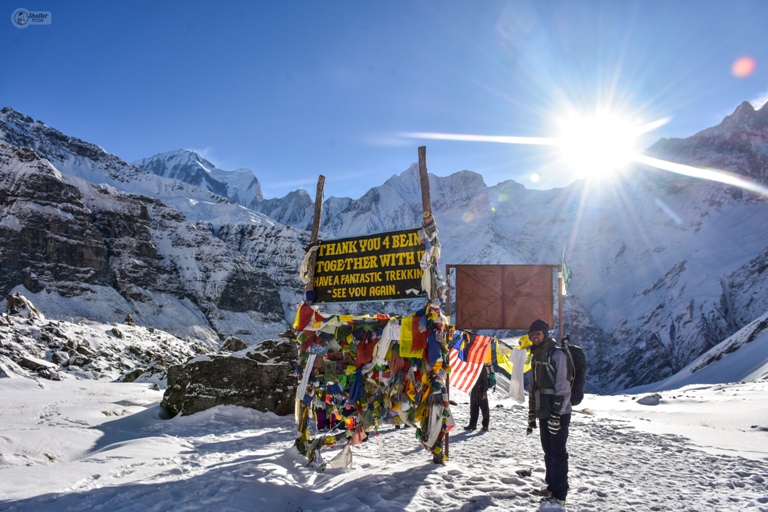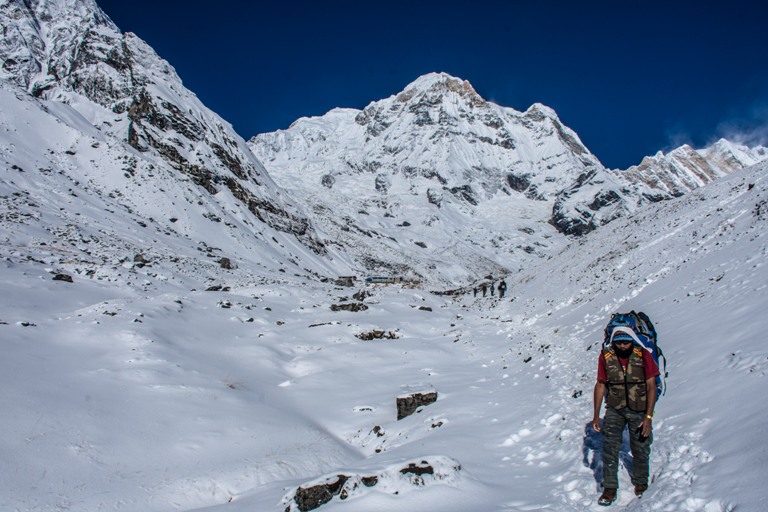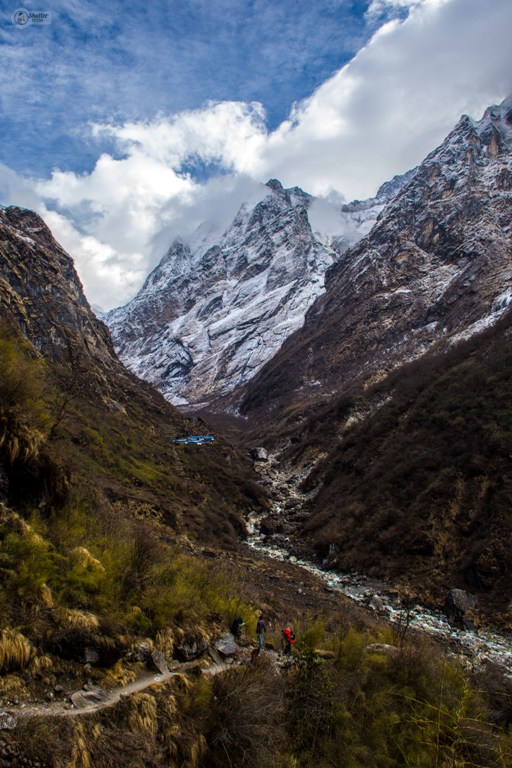The endless mountain scenery – so radically removed from familiar cityscapes – has its own calming impact.
The ABC trekking trail
Nepal’s original teahouse trek, the route around the mighty Annapurna still sets the standard for Himalayan journeys. The endless mountain scenery – so radically removed from familiar cityscapes – has its own calming impact. The process of slowing the tempo of life to walking pace is also a sure way of peeling away the stresses of modernity. The Annapurna circuit is one among Nepal’s offering of some of the best facilities in the world for those wishing to walk with minimum planning and equipment.
On an average, those willing to walk up to seven hours a day can easily finish the trek, i.e. reach base camp and return, in six days. Further while the trail with its infamous stairs isn’t exactly the easiest, it isn’t technical either. Each year many trekkers, locals and foreigners alike prefer to tackle ABC on their own without any professional guidance and this is absolutely doable.
However, those with no prior trekking and navigational experience can also hire porters and guides. They are usually available for a cost of Rs 1,000 to Rs 1,500 a day (depending on your network and negotiation skills).
The starting point
Every trekker’s journey begins from Nayapul on the outskirts of Pokhara city. From there you can choose different paths. The popular choices are between Ghandruk and Ghorepani. They serve as the first pit stops. In terms of effort and time required, there isn’t much difference between the two but you might still want to do some research before making a decision. A tip though: these days vehicle service is actually available up to a certain point but I highly recommend you choose to walk. It proves to be a good warm up session and will also give you a clue of what to expect.
The Call of the Mountains


The real trek begins
The ABC trek really begins from the second destination of the trip, Chhomrong. The actual walking time from Chhomrong to the Sanctuary is in the region of twelve hours, but you should plan to spread the trip over three or four days. The route above Chhomrong is simple and spectacular but really challenging. This is where you prepare yourself for the 2000 plus stairs. After a difficult descent and re-ascent, and then another descent after Sinuwa on another 300 plus steep stone staircase (which gets very slippery during the wet or snow seasons), you start steadily ascending the west side of the deep and forested Modi Khola valley making for a narrow notch between the sheer lower flanks of Machapuchare and Hiunchuli.

Accommodation and altitude
Many facilities have been added to the ABC circuit these days. Even those who were there say just five years ago might be surprised. Lodges, resting spots, and restaurants have significantly increased on the route. Still, be aware that in the autumn peak season, lodges can fill early, especially as you move higher up. There are many instances where trekkers often end up sleeping on the dining-room floor so make sure you have a warm sleeping bag. Or network, find out about lodging options and make reservations beforehand.

Similarly, altitude sickness is another important factor one has to keep in mind. This is a physical condition that occurs at higher elevations (more than 2000m) due to the change in air pressures causing problems such as nausea, diarrhea, dizziness and loss of appetite to fatal conditions like coma or even death. As Annapurna base camp lies at a higher altitude, altitude sickness is one of the most common problems faced by trekkers. It’s best to give yourself some time to acclimatize yourself.
Photos Courtesy: Rishav Adhikari









































